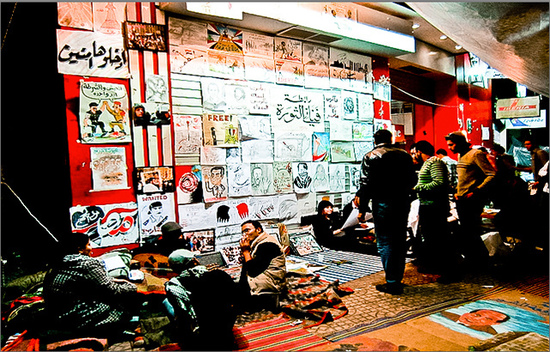Political and beautiful, Egyptian street art isn't just about ancient stick figures anymore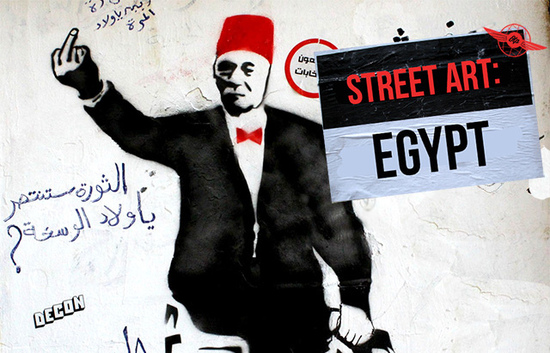
Photo by: Gigi Ibrahim
Millions protested for their rights. Presidents were overthrown, elections were rigged, faiths were challenged, people died and life was changed forever. The time was now and the people of Egypt were finally ready to speak up. Street art, an ancient form of expression in Egypt, has been revived as the vehicle for the voices of the Revolution.
Brief History
Photo by: Gigi Ibrahim
Remember hieroglyphics? Egyptian culture has always been down with using wall art to record history, but more recent governing powers kept street artists sidelined in fear. Then, in early 2011, the Revolution happened, and a country-sized can of democratic beliefs was shaken and sprayed all over Cairo. While tens of thousands picked up bricks and sticks during the 18-day demonstration to overthrow long-standing President Hosni Mubarak, street artists protested by bashing contemporary politics through expressive paintings.
With Mubarak ousted, the people of Egypt were victorious but remorseful for all the lives lost in the protests. Fresh-on-the-scene street artist Ganzeer started a trend through a series of "Martyr Murals" which honored the fallen and reminded citizens of the nation's struggle for freedom, democracy and equality. After one of Ganzeer's martyr murals was painted over by the military, outraged artists took to Twitter to set up what would be known as the Mad Graffiti Weekend. Armed with stencils and loaded with paint, dozens of supporters splattered walls across the city, taking aim at both the unjust censorship and military tribunals that were running rampant with power during this period of political confusion.
Months later, Egypt's first free presidential election brought Mohamad Morsi to the seat. After a year of shaking shit in his favor toward drafting a new constitution and imposing Sharia Law upon Egypt's citizens, Morsi was soon viewed as an enemy to democracy and millions protested in demand of his resignation. Forced to listen, the military kicked Morsi out, and-fueled by their freedom of expression-the people of Egypt reclaimed their land and its freedoms.
Artists You Should Know
Chico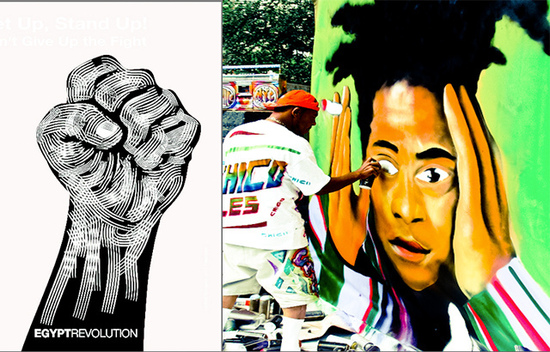
Photo by: Eden, Janine, and Jim & Michael Thompson
The young gun who sprays fast and often, Chico was into art and graffiti before the Revolution and he now teaches the stuff. A fan of stencils because they're fast and safe, Chico was largely responsible for most of the anti-Mubarak political pieces swirling around Tahrir Square during the Revolution. Authorities are always fast behind Chico's ass trying to cover his goods but he's always ahead of the game: stenciling, spraying and spreading democracy -- all in a day's work.
Alaa Awad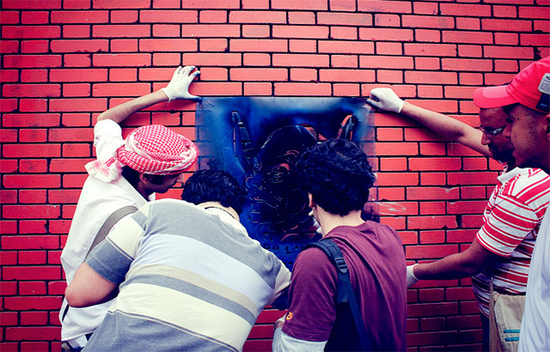
Photo by: Gigi Ibrahim
Attack of the art! Alaa Awad claims he's no painter but he came to Cairo to join the Revolution with nothing but a brush and some paint as his means of protest. In a sea of shouting thousands, he probably didn't contribute much waving his brush around 'til he put it to the paint. Stemming from the Revolution, his style is intricate with an ancient Egyptian flare reminiscent of the days of Pharaoh's past. Reminding Egyptians that they were the OG graffiti artist, his works often feature women, their respected social roles of the past and how important their role is in this Revolution.
Women On Walls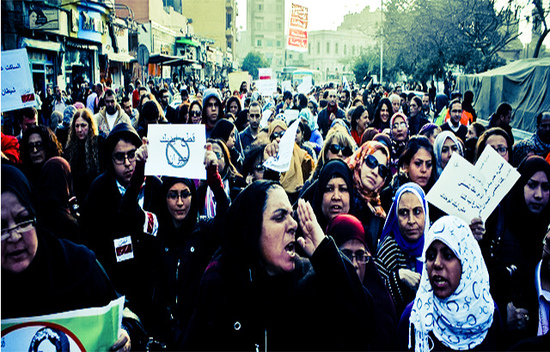
Photo by: Gigi Ibrahim
WOW started when Swedish photojournalist and graffitologist Mia GrÖndahl rounded up a dozen Egyptian street artists after observing them and their works for nearly two years. The mission was clear: push boundaries for women's rights in a transforming, paternal society. Now composed of over 60 members (many of whom are women), Women on Walls paint murals of women's current role in Egyptian society against their idealized depiction of where women will come to stand as the Revolution continues. It's not all fun, games and graffiti. Eighty percent of Egyptian women have been sexually harassed, an issue that WOW tackles with subtle style.
El Teneen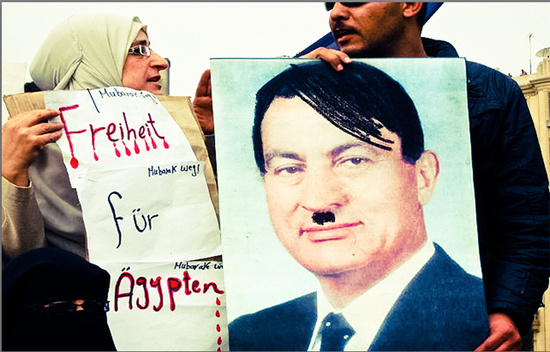
Photo by: Kodak Agfa
El Teneen started simple: a portrait of Mubarak next to the word "LEAVE." From there he joined forces with Chico in stenciling political pieces targeting the Supreme Council of Armed Forces, which took over after Mubarak and was criticized for replacing one autocracy with another (don't you hate when that happens?). Check out his spray-painted chessboard piece of a king fallen on the American University in Cairo. His Twitter will tell you "I spray shit on walls on Cairo streets," so he's definitely not in the game for the fame. We love you anyway, El Teneen.
Ganzeer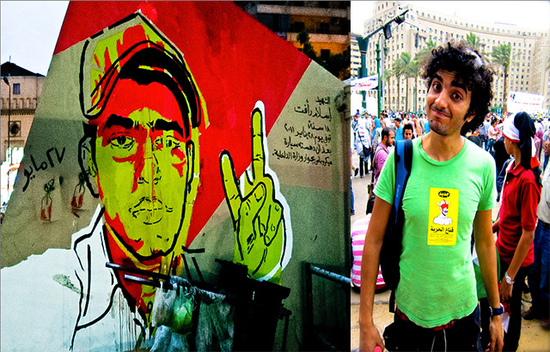
Photo by: Gigi Ibrahim
No true artist does it for the fame but we'll give Ganzeer the credit for starting this street art revolution thang. He's the one who introduced the beloved Martyr Murals. He was on the streets passing out posters like his "Freedom Mask," which depicts a blindfolded and gagged citizen under the new Supreme Council of the Armed Forces rule. He's been tossed in jail but always came right back to it as soon after his release. His name translates to "bicycle chain." Circular movements? Revolutions? Bicycles?! Fuck yeah!
Satire against Mubarak and Morsi, depictions of military violence and sexual harassment, poems paying tribute to martyrs and martyr murals can all be found in and around central Cairo's Tahrir Square (aka ground zero for the fucking largest mass protest in human history). After the protest of 2011, the military was strict in trying to cover up street art but the results of the (bigger) 2013 protest and its accompanying art are here to stay. Leading right into Tahrir Square, Mohamed Mahmoud Street has become an open-air art gallery for all things worth fighting for. While you will find street art and across the country (second largest city Alexandria's got some good stuff), stay central and keep it in Cairo for the biggest, most badass, murals found specifically around Tahrir Square, Zamalek and downtown districts.
The Egyptian Revolution is an ongoing movement that isn't met without opposition. Extremists are still fighting for their beliefs, while the majority of the nation is on board with moving forward to a more liberal, new Egypt. For now, the street art scattered across the nation's major cities serves as a visual reminder of the continuing Revolution.
Written by: Chris Platis
